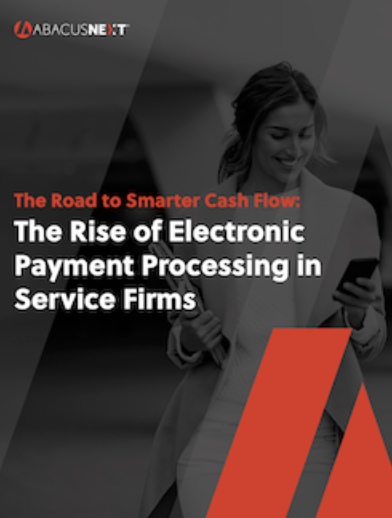
How to Price Accounting Services: A Guide for Accountants by Accountants
When I first started my business, I charged my first client twenty dollars an hour, which, I’m aware sounds crazy low… However, at the time, my only accounting experience consisted of working for my mom’s accounting firm and the family CPA back in high school. My degree wasn’t in accounting, so the learning curve was extreme, and most tasks took significantly longer than they should have. So, how did I go from that humble beginning to charging over $1000/month in less than five years? By learning skills and strategies, not only in business and accounting, but also in pricing and onboarding.
Switching to value-pricing accounting services
When it came down to it, the thing that really moved the needle in switching from hourly pricing, even at more standard rates, to value-based, flat-fee pricing was understanding that it was not a switch that got flipped, but rather a multi-step evolution that involved understanding my own onboarding process; learning the amount of time it usually took me to perform standard client tasks; estimating how to factor for the unknown; and developing the confidence to ask for it.
Evaluate your current pricing strategy
Before we can figure out how to get to where we’re going, we have to know where we’re starting. For me, that started with understanding what I was already charging from a flat-fee perspective for each of the individual services that I offered. That process involved breaking down the billing I was already doing into service categories: assessments, clean-ups, QuickBooks set-ups, monthly billings, quarterly billings, etc. I set up a system to track my own time not only by client, but also by service category. After about six months of this, I was able to run reports and find patterns. While every client is different, I finally had an idea of how much time I usually spent on each service, for each client, and was then able to calculate service-time averages.
 Understanding your billing is a key part of accurately pricing your services. If you’re stuck doing that manually, you’re at a disadvantage. Download our free whitepaper The Rise of Electronic Payment Processing in Service Firms to discover the benefits of automating billing and payment processes.
Understanding your billing is a key part of accurately pricing your services. If you’re stuck doing that manually, you’re at a disadvantage. Download our free whitepaper The Rise of Electronic Payment Processing in Service Firms to discover the benefits of automating billing and payment processes.
A year or two into this strategy, there was enough data for me to be confident in the consistency of my workflow and my niche, knowing businesses of this size required about thirty hours for a one-year clean-up, while businesses where the owners often co-mingled funds and had multiple credit cards took closer to forty or fifty hours to clean-up. When analyzing monthly services, businesses this size required about seven hours monthly, while clients with inventory and Shopify reconciliations required about ten hours of my time on a monthly basis.
One might be thinking, but wait… I thought we were trying to get away from trading time for money? We are…however, one thing to keep in mind is that changing from hourly to value-billing isn’t just a workflow shift, it’s also a change in mindset. It’s a process. I remember attending conferences and webinars and thinking ‘Ok, I see where they’re going, but I need steps one and two, and they’re giving me five and six’. I understand that many in the value-billing world say that time is not a factor in determining the value, because we are billing for expertise rather than time. However, I found that I needed somewhere to start, and knowing the amount of time a task required gave me a baseline.
So now that we have an idea of our time averages, we can calculate our current flat-fee pricing: time required multiplied by our desired hourly rate.
This is a critical step, especially when trying to convert current hourly clients to value-based pricing. Knowing this information will also breed confidence in answering the question ‘How did you get to this number?’ from your current clients. So now that we know where we are, and we know where we’re going, the next step is figuring out how to get there.
How much should you charge for accounting services?
One of the biggest fears people have, and I also had, in switching from hourly to flat-fee or value-based pricing is that they will price the work, and later find out that there was considerably more work than they had initially anticipated, and there goes the profit. This is where the discovery and onboarding process come into play.
Through attending conferences and webinars, I learned that people are actually charging for the discovery process separately from the work itself. Learning and implementing this strategy was key in overcoming this fear and breaking out of the practice of pricing without knowing the scope. Additionally, creating an onboarding process broke up the discovery into individual steps: a consultation, assessment or discovery; a set-up or clean-up; and then on-going monthly services. Breaking this process into individually-priced steps created space for me to discover as I went, building pricing into the next step if I misquoted the first one.
Charging for the discovery gave me peace of mind, allowing me to really deep-dive into the client’s books before officially taking on the job and getting locked into a set price. Charging for the set-up and/or clean-up helped to get all the skeletons out of their closet, before quoting the monthly flat rate. Additionally, knowing my clean-up time-averages gave me a basis for building a buffer into the pricing. The job may look ‘simple’ (we know that it never is), but knowing that my average ‘simple’ clean-up requires forty hours, I might price it what I priced my last clean-up, plus ten percent, as a buffer for finding unknown issues.
How to test new accounting pricing packages for your firm
One strategy for testing new pricing is to test it on potential new clients. I tested out my new pricing strategies on potential clients before converting my current clients. It can be less scary, and if they walk away, you haven’t lost anything. Always remember to ask the client their budget (and if it’s flexible) in the consultation, especially if you’re not in a position to let potential clients walk away, so that you are able to gauge their expectations and plan accordingly. When first pricing our services, we accountants can grossly undervalue ourselves. One way to overcome this: try quoting prices that seem ‘really high’. Take what you would normally price, and then add twenty or thirty percent when presenting to a new potential client. When I first tried this, I was always shocked at the number of clients who agreed to my ‘really high’ rates. If you don’t have the confidence at the beginning, just keep doing it. Try it ten or more times before deciding if it actually works. As people start to accept your higher rates, your confidence will increase, and you will start asking for what you actually deserve, and you’ll be one step closer to value-based billing.
When changing pricing, start small
In the accounting world, it seems like everyone is talking about switching to offering client advisory services, and I agree, that’s where we should be headed. However, one can’t go from A to Z in one jump. Start with mastering value-based pricing in what you’re currently doing by understanding your current flat-fee rates, then testing out new pricing on new clients, and then switching over your current clients. Once you have a handle on that, then start shifting your services toward advisory. Set up meetings with clients you didn’t meet with regularly in the past, or instead of simply sending the reports, start sending a cover page dissecting their KPIs, explaining what the reports actually mean, or make suggestions on how they could increase profits this quarter.
Remember, changing your pricing strategy is an evolution and a process: give yourself GRACE. It’s a learning curve. It’s trial and error. It’s doing it ‘wrong’ just to learn that that step or strategy doesn’t work for you. There isn’t a right or wrong way to run your business. Learn from others, test it for yourself, see how your clients respond, then create your own version of the process and present it with confidence. You got this!
Interested in additional informative topics?
Join our hosted webinar series on CPA Academy
From professional development to efforts that can boost your firm’s digital brand, we explore topics that can improve your practice’s growth opportunity. We offer advice to help your support staff be more productive and highlight the latest tax and accounting trends.
Tackle your next challenge, or even better – earn CPE credit – by checking out our upcoming webinars on AbacusNext CPA Academy Webinar Portal: https://www.cpaacademy.org/company/AbacusNext